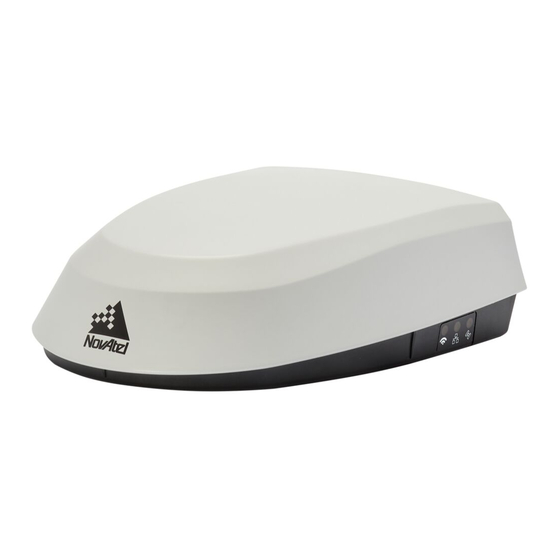
Novatel SMART7 Manuals
Manuals and User Guides for Novatel SMART7. We have 3 Novatel SMART7 manuals available for free PDF download: Installation And Operation User Manual, Installation And Operation Manual
Novatel SMART7 Installation And Operation User Manual (146 pages)
Table of Contents
-
-
SMART7 Leds22
-
-
Mounting26
-
Orienting26
-
Serial Ports28
-
Wi-Fi29
-
CAN Bus Port30
-
-
Glide43
-
Steadyline44
-
Enabling PPP45
-
Rtk Assist47
-
-
-
Wi-Fi Modes82
-
Client82
-
Concurrent82
-
Wi-Fi Modes83
-
-
-
-
NMEA2000 Logging103
-
-
RXSTATUS Log106
-
Status Word106
-
Error Word107
-
-
Safe Mode116
-
Recovery Steps117
-
-
Firmware Updates118
-
Model Upgrades118
-
Softload Errors128
-
Advertisement
Novatel SMART7 Installation And Operation Manual (140 pages)
High performance GNSS receiver and antenna
Table of Contents
-
-
SMART7 Leds18
-
-
-
-
Glide39
-
Steadyline40
-
Rtk Assist45
-
-
-
-
RXSTATUS Log77
-
Status Word77
-
Error Word78
-
-
-
Wi-Fi Modes81
-
Client81
-
Concurrent81
-
-
-
-
NMEA2000 Logging102
-
-
Safe Mode113
-
Recovery Steps113
-
-
-
Firmware Updates115
-
Model Upgrades115
-
-
-
Novatel SMART7 Installation And Operation User Manual (35 pages)
Table of Contents
-
-
SMART7 Leds13
-
-
-
-
Wi-Fi21
-
CAN Bus Port22
-
-
-
-
Advertisement
Advertisement


